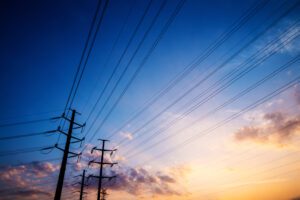By how much does shore power cut pollution?
With high-voltage shore connection technology you power berthed ships from the local electricity grid and not from generators. And with their engines off, vessels themselves produce no air or noise pollution.
Shore connection technology comes under different names:
- Onshore power supply (OPS)
- Cold ironing
- Shore supply
- Shore power
- Shoreside power
- Alternative marine power
- Shore to ship power.
Regardless of the term, the practice slashes NOx, SOx and particulate emissions by 90% and reduces carbon footprints by up to 50%.
The California Air Resources Board estimates that if ships hoteling three times or more a year in Long Beach Port were to use shore power, emissions would be cut by 70%.
How might the smart grid contribute?
With the development of the smart grid, you will be able to make greater use of renewable energy sources. Shore power will mean green power, not greenhouse gases.
Can ecological be economic?
Installing shore power connection facilities will bring you new business. You will provide merchant and cruise ships with a green, cost-effective service. By selling electricity you will soon recoup your capital investment and earn revenue.
A number of countries help port operators. They have introduced subsidies to encourage ports to invest in green shore connection solutions. One example is the European Marco Polo Programme. It will co‑finance shore power projects, supplying up to 20% of the investment cost.
Another incentive is EU Directive 2003/96/EC. It offers lower taxation rates on shore-supplied power. Sweden and Germany have already cut their tax rates and there are plans to exempt shore power from tax for a given number of years.
How does shore power help operators comply with regulations?
EU Recommendation 2006/339/EG urges member states to install shoreside power supply facilities. Particularly in communities where air pollution has exceeded health thresholds and people have voiced concern over emissions and noise pollution.
The California Air Resources Board has made shore connection systems mandatory from 2014 and requires 80% of the power used in shore supplies to be electrically generated by 2020.
China, too, has identified shore connection as a key part of efforts to curb pollution in ports in its 2011-15 five-year plan.
Have many ports adopted shore power?
Shipping industry bodies have also called on ports and harbours to use shore connection facilities. In 2008 the World Ports Climate Initiative was launched. It states that it is the duty of ports and harbours to reduce greenhouse gas emissions and pinpoints shore connection as an effective solution.
A handful of cities around the world have adopted shore power. One particular example is Gothenburg in Sweden where portside ship emission have been cut by up to 97%.
And shore-power-equipped ports are at an advantage. Since 2010, the European Union has required all berthing ships to use either costly 0.1% sulphur distillate fuel or onshore power supplies. As more and more shipping companies comply with IMO requirements and incorporate shore connection capabilities, ports are poised for better business.




Conversation
When connecting multiple ships at same berth, is it compulsory to use separate independent isolated connections using one transformer for every outlet? or is it enough to use one only transformer for the whole berth?
As per IEC/ISO/IEEE 80005-1 standard, for HV Shore Connection system is mandatory to have a galvanic separation between ship and shore and also between different ships. This could be done by using one transformer for one ship. Galvanic isolation may not be required on shore where a HV shore supply is dedicated to supply only ships which have galvanic isolation on board. A risk assessment should be performed.
Thanks for your answer. Ii seems that´s quite clear. In case that the transformer is provided onboard, I think that separate 67N protections on shore should be required to isolate earth faults for different ships feeded by the same transformer substation at berth.
This possibility is only for shore installations where all the calling ships have a galvanic isolation onboard, means that if other ships will came after (and without transformer onboard) cannot be connected even answering to international standard. Our recommendation is the use of one transformer for one ship to have the further flexibility. Anyway, if employed, you can use separated 51G protections to ensure selectivity between different feeders, or the 67G if the leakage capacitance of the cables from shore substation to ship is too high (you’ll avoid the false tripping of 51G protections on the healthy feeders due to circulation of the ground fault current thru capacitance of healthy cables).
OK. Crystal clear answer. Thank you very much.
I must agree with this!